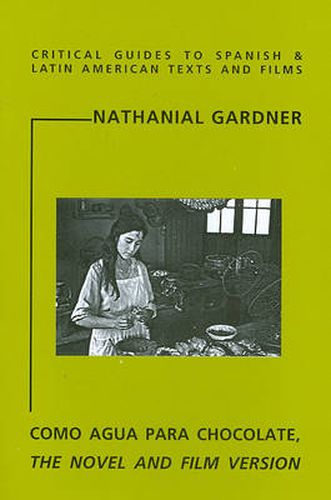Readings Newsletter
Become a Readings Member to make your shopping experience even easier.
Sign in or sign up for free!
You’re not far away from qualifying for FREE standard shipping within Australia
You’ve qualified for FREE standard shipping within Australia
The cart is loading…






Laura Esquivel’s debut novel Como agua para chocolate took the literary World by storm with its unique yet familiar story of love and longing on the Mexican border during the perilous times of the Mexican Revolution. This author’s narrative, seeped in magic and peppered with Mexico’s culinary customs, was quickly taken to the silver screen where Tita and Pedro’s forbidden relationship would captivate audiences not only in its native country, but around the globe - cementing Equivel’s name within the ever-growing canon of Latin American women writers. Nathanial Gardner introduces the reader to both the novel and the film version of Como agua para chocolate and examines not only key themes, such as rebellion and tradition, but also its style and main characters. This narrative’s acclaimed use of food and other gastronomic elements are taken into consideration as well as the significance of magic realism to this text. As this novel/film combination follow each other in an unusually close manner, the first part analyses many of the components the two share while the second part of this study emphasizes the cinematic mechanisms that are unique to this particular presentation of Esquivel’s most widely-studied creation to date.
$9.00 standard shipping within Australia
FREE standard shipping within Australia for orders over $100.00
Express & International shipping calculated at checkout
Laura Esquivel’s debut novel Como agua para chocolate took the literary World by storm with its unique yet familiar story of love and longing on the Mexican border during the perilous times of the Mexican Revolution. This author’s narrative, seeped in magic and peppered with Mexico’s culinary customs, was quickly taken to the silver screen where Tita and Pedro’s forbidden relationship would captivate audiences not only in its native country, but around the globe - cementing Equivel’s name within the ever-growing canon of Latin American women writers. Nathanial Gardner introduces the reader to both the novel and the film version of Como agua para chocolate and examines not only key themes, such as rebellion and tradition, but also its style and main characters. This narrative’s acclaimed use of food and other gastronomic elements are taken into consideration as well as the significance of magic realism to this text. As this novel/film combination follow each other in an unusually close manner, the first part analyses many of the components the two share while the second part of this study emphasizes the cinematic mechanisms that are unique to this particular presentation of Esquivel’s most widely-studied creation to date.